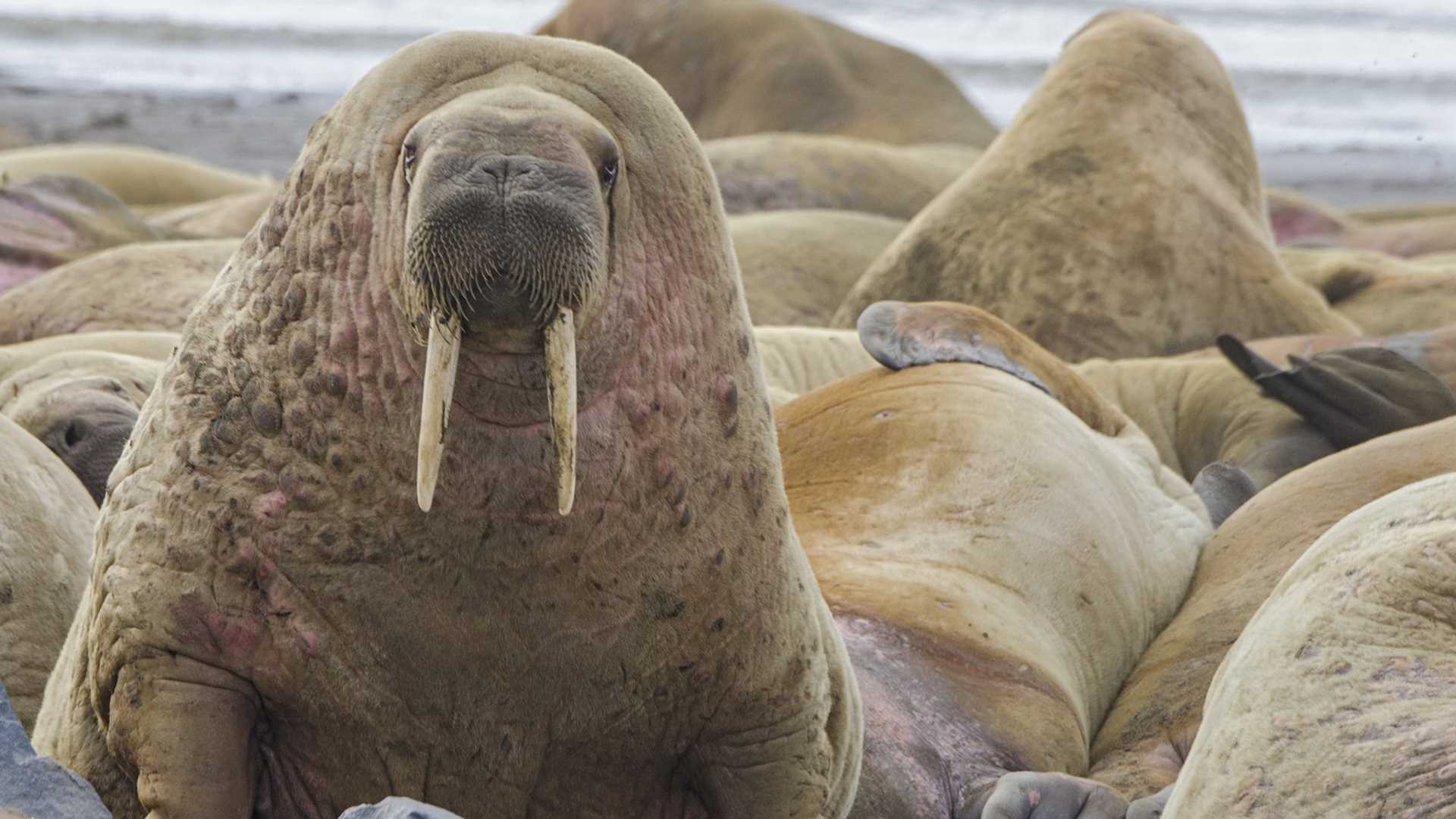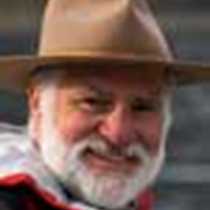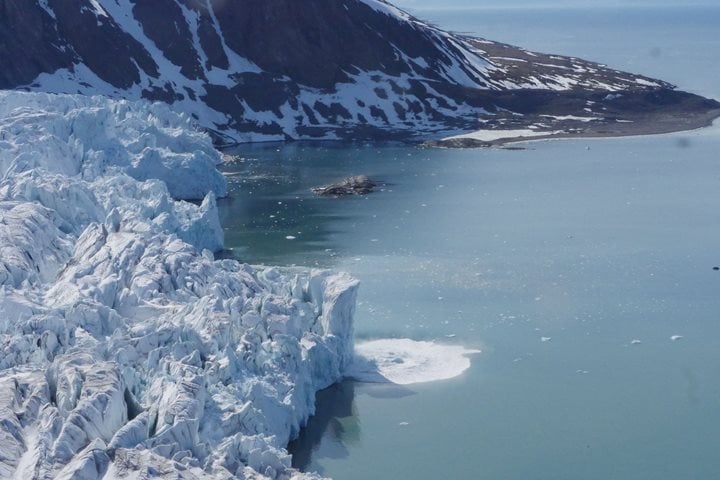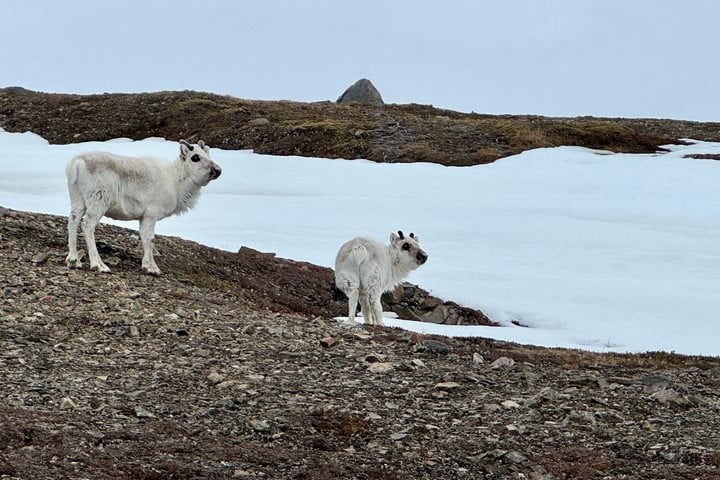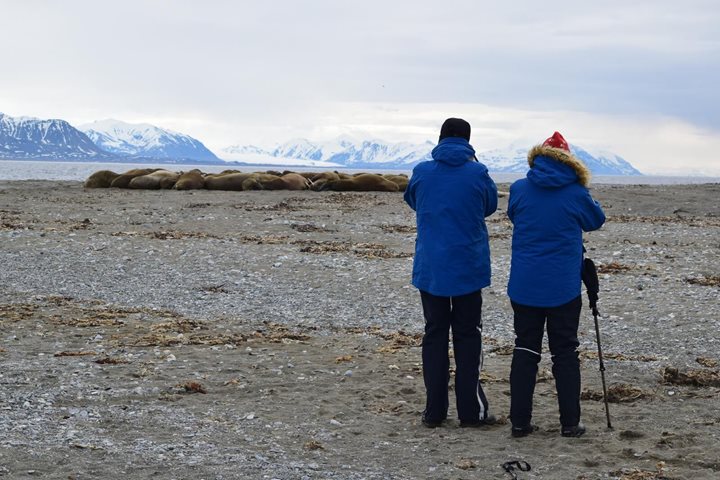After a long sail from the places we explored yesterday, National Geographic Explorer made her way into the protected waters of Russebukta, our destination for the morning’s activities.
After yet another hearty breakfast we donned our foul weather gear and collected our cameras and boarded the Zodiacs, and once ashore joined the naturalists for long, medium, short, or photo-focused walks.
All of the walks headed into the tundra, so prevalent in this part of the island of Edgeøya. There are rocks along the coastline and many outcrops inland. There are extensive moss banks, many different colored lichens, and many different flowering plants in bloom. Most of them are saxifrages.
After awhile we came across a few Svalbard reindeer grazing on the vegetation and sporting new antlers still in velvet. These animals are much stockier than their cousins in other parts of the world. When we remained still they became inquisitive and drew closer to us, always wary, and with the smallest disturbance trotted off. Off in the distance more could be seen.
A little further on we came to the first of several inland lakes and there we sighted red-throated loons, long-tailed ducks, and quite a number of red phalaropes displaying. All along the way we were treated to the beautiful song of the snow bunting and quite often we caught glimpses of this lovely little bird, the only songbird that nest up here in the High Arctic.
The children among us, always inquisitive, brought us shells, feathers, bones, and anything that caught their eyes and inspired questions. It was an opportunity to maybe learn a little more deeply about some of the many living organisms that inhabit this challenging environment.
During lunch we repositioned the ship to the northwestern tip of the island to a place called Kapp Lee. Once there a scout Zodiac was sent out to see if the landing was feasible as there was a lot of fog about the place. We were delighted to hear that it would be possible to go ashore, though we must do so in small groups as there was concern that too many people at once would frighten the walrus hauled out on the beach. YES, we were to see walrus! We were delighted.
The sight of these huge, tusked mammals all bunched together is wonderful. Every now and then they moved about and in the waters close to the shore a number of animals sparred with each other. It was a real highlight for us all.
The area from where we watched the giant marine mammals has some old ruins as well as three well-maintained wooden huts. These hark back to the joint Swedish-Russian Arc of Meridian Expedition in 1899-1902. They would have subsequently been used by trappers who were allowed to hunt in Svalbard until the mid-1960s. Evidence of some of these activities are the huge number of old and whitened walrus bones that are strewn over hundreds of square yards from the landing site to the huts.
There was a feeling of elation during cocktail hour and evening Recap.
But the day was not over…after dinner we had the opportunity to listen to some music performed by some of the musicians from the crew, complete with an opening performance by our naturalist Doug Gualtieri. The musical band was comprised of one of our waiters, Jeffrey, our headwaiter, Joel and our deck officer, Freddy. They all put on a wonderful show and soon enough the mood had caught us all and many headed for the dance floor to jive away. It was a lot of fun and those who chose not to partake of the dancing certainly got a lot of laughs.
Outside the seas are glassy calm and bathed in bright sunshine with the beautiful skyline of mountains on the island of Spitsbergen off to the west. What a wonderful way to head down to our cabins and collapse into our beds with a feeling of gratitude for another great day in Svalbard and with a feeling of warmth for the fun we have experienced with the music and dancing.

